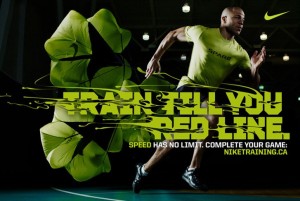How to Slam Dunk Your Marketing Like NIKE Using Customer Segmentation
Did you know…NIKE made $30.6 billion in sales for fiscal year 2015, UP 10% from the prior year?¹ Talk about wanting to be like Mike!² How did they do this, you ask? Customer segmentation.
Download a complete PDF of this article.
Customer segmentation is something you may already be applying in your own business and may not even realize it. NIKE, a designer and manufacturer of sporting goods (e.g., running shoes, golf accessories, soccer, football, tennis, and children’s apparel, etc.) is a master at segmenting and targeting their customer groups with marketing precision. Every business, including yours, can learn from a company like NIKE.
What Is Customer Segmentation?
According to Wikipedia:
Market (customer) segmentation is a marketing strategy which involves dividing a broad target market into subsets of consumers, businesses, or countries that have, or are perceived to have, common needs, interests, and priorities, and then designing and implementing strategies to target them. Market segmentation strategies are generally used to identify and further define the target customers, and provide supporting data for marketing plan elements such as positioning to achieve certain marketing plan objectives.³
As the definition suggests, you use certain qualifiers for your customers and place them into “buckets” with the goal of targeting them in a way that is more precise and effective.
Why Should You Use Customer Segmentation?
You should use customer segmentation to avoid mass marketing.
I’ve seen many businesses waste money by mass marketing their services and using a one-size-fits-all approach to delivering their messages. Sure, if you have millions of dollars to run TV commercials you can send a message to the masses that can potentially affect your branding and awareness—but most small business don’t have those kinds of resources.
Let’s look at a couple examples:
Imagine you’re a business owner with 20 employees selling hand-crafted gift baskets, and you see an advertisement that says:
“If your business ships thousands of packages a year and is looking for ways to gain economies of scale, take a look at our solutions.”
Well, what if your business only ships 300 or 500 packages a year? This ad would effectively disqualify you because it has no applicability to you or your business.
Alternatively, imagine you see another advertisement for a similar service that says:
“If your small business needs affordable shipping solutions, tailored to your seasonal volume needs, with the logistical resources of a Fortune 500 company, take a look at our solutions.”
WHOA! Which message would you find more effective? The second advertisement, of course! The second ad speaks directly to you and your needs as a small business—offering a tailored solution that may fit your smaller budget and offering the manpower you simply don’t have in-house!
Customer segmentation allows you to communicate with your target audience in a language THEY can understand and easily relate to—and BUY.
Don't let bad #copywriting cost your #business valuable #sales. #tipsbyang https://t.co/4mS5Dh5dBM pic.twitter.com/iDHrwC9UWg
— Angela | Your Messaging Genie™ 🧞♀️ (@justpositionit) March 24, 2016
What Are the Benefits of Customer Segmentation?
The benefits of using customer segmenting are far-reaching and is a strategy every business with customers or clients can use.
Benefits include:
- Building loyalty
- Retaining customers
- Increasing sales and lifetime value
- Reducing marketing expenses
- Tailoring communications and positioning
- Gaining a better understanding of your customers
- Uncovering buying and engagement habits
- Staying on top of trends
- The list can go on…
Ways to Apply Customer Segmentation to Your Business
Let me first start by saying that there many ways your business can use customer segmentation, including: demographics (e.g., gender, age, race, etc.), geography, psychographic, cultural, and many others.
One strategy small businesses may have an easier time getting their arms around and implementing is a customer strategy called Recency, Frequency, and Monetary or (RFM) segmentation. RFM can work well even if you don’t have a large range of products or services you sell.
Practical Ways You Can Use RFM
RFM simply segments customers according to buying patterns, such as:
Recency: When was the last time your customers bought from you or downloaded a piece of content? A week ago, a month ago, six months ago, a year?
Frequency: How many times in a given time period has your customer bought from you, opened your emails, or NOT opened your emails?
Monetary: What have your individual customers spent over time? How much do they spend on a given purchase?
Six Ways to Generate Marketing Messages with RFM
-
-
-
- (Recency) If you have a large group of customers who bought from you six months ago, you could send a “We miss you” email to try to reactivate them. You could couple this email with a free or discounted item, perhaps related to the item they last bought.
- (Recency) If you have a small group of customers who have bought from you within the last month, now’s the time to show the love. Reach out to them and ask how their experience was and if they are enjoying their purchase, and make an offer to get them to purchase again while the experience is still fresh.
- (Frequency) If you have a large group of customers who’ve made very infrequent purchases from you, you may want to reach out to them with a survey and ask about their experience or upsell them another product or service.
- (Frequency) If you have a small group of customers who’ve made many purchases, you may want to offer bulk discounts or package your services or products.
- (Monetary) If you have a smaller group of customers who’ve spent a lot of money in a given time period or have engaged heavily with you, that is a group you may want to solicit referrals from or offer a customer rewards program to, or launch a refer-a-friend program targeting.
- (Monetary) If you have a large group of customers who’ve spent very little money with you, you may want to cross-sell a product or service.
-
-
You see? Using RFM can help you more easily segment and target your customers based on their purchasing and engagement habits and patterns. These strategies can be retooled, certainly, depending on the nature of your product or service, the price point, and many other factors.
So, Back to NIKE
NIKE is a master at segmenting and targeting their customer groups with marketing precision. Take a look at a sampling of their advertisements that demonstrate their understanding of exactly who they are talking to:
The Bottom Line
Customer segmentation is something you may already be applying in your own business and may not even realize it.
Take a little time to thoughtfully analyze your RFM segments and slam dunk your targeting, marketing messages, and sales…like NIKE.










